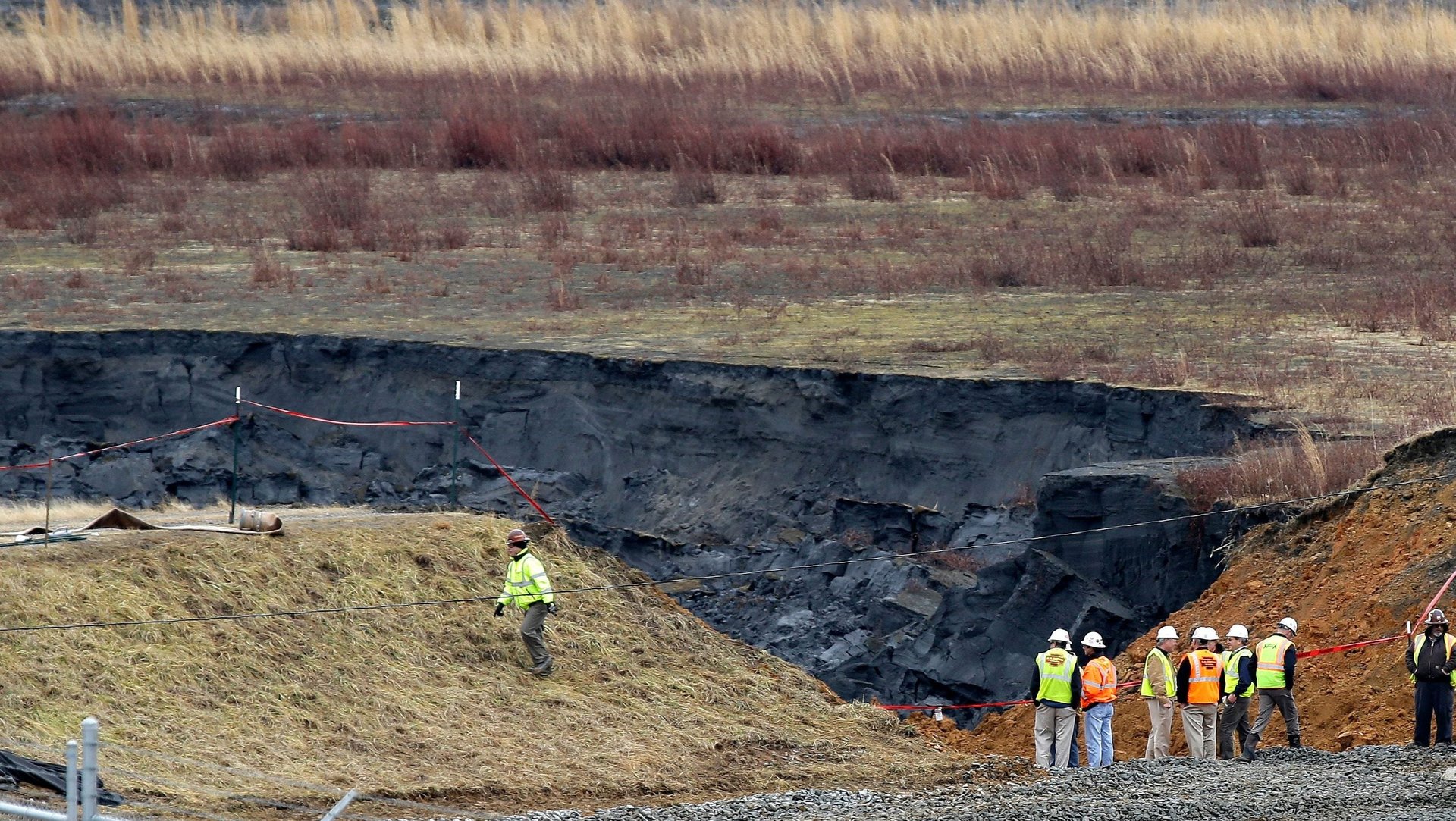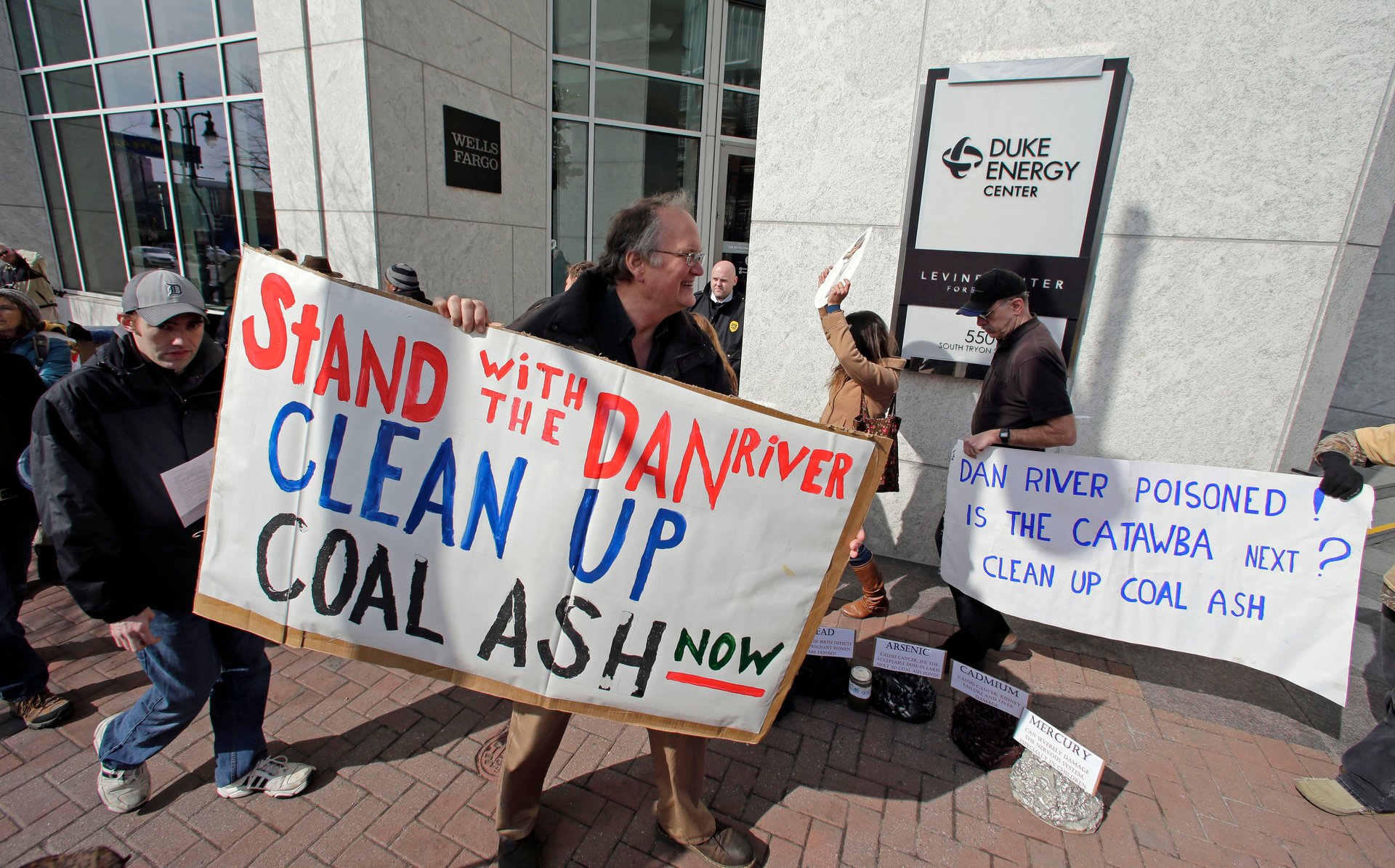Coal ash pits full of arsenic and lead are in the path of Hurricane Florence
They say if your business produces a lot of toxic waste, it’s best to put it in open pits near bodies of water that might flood.


They say if your business produces a lot of toxic waste, it’s best to put it in open pits near bodies of water that might flood.
Actually, no one says that. But that’s what power companies in North Carolina and other states in the path of Hurricane Florence have done for decades.
When power plants burn coal, they produce a waste product called “coal ash,” which is often a mix of fly ash from the combustion, and a toxic sludge from the scrubbers that trap some of the pollutants from the burning coal before they end up in the air. The coal ash is full of arsenic, lead, and other heavy metals. The companies often store such ash in “coal ash ponds,” or just in really big piles. They’re often along rivers. In some cases, they’re in flood zones.
“Sometimes coal ash is piled 100 feet high,” Sam Perkins of the Catawba Riverkeeper Foundation, which monitors waterways in some 5,000 square miles in North and South Carolinas, told InsideClimate News.
The National Weather Service warned on Thursday (Sept. 13) of “catastrophic flash flooding and prolonged significant river flooding” in North Carolina when Hurricane Florence touches down in the state. North Carolina has 37 coal ash ponds, of which the EPA has rated 29 a “high hazard” if they spill [pdf].
Overall, there are 71 coal ash ponds at power plants in Georgia, South Carolina, North Carolina, Virginia, and Maryland, according to the environmental law group EarthJustice, which has been pressuring states to force companies to clean up or better secure these sites. Of Virginia’s 30 ponds, 13 are unlined [pdf].

In 2014, Duke Energy, the main supplier of electricity in North Carolina, spilled 39,000 tons of coal ash into the Dan River after a pipe collapsed. It left 70 miles of the river coated in coal sludge. In 2015, in Dukeville, North Carolina, Duke Energy informed some residents that they should not drink the water from their home faucets because it had been contaminated by coal ash waste. The company pled guilty to criminal negligence after federal prosecutors found that Duke could have avoided the Dan River spill.

In 2016, North Carolina gave Duke Energy until 2019 to clean up and close remaining coal ash ponds and pits that pose threats to public health. The company has been working on draining some coal ash ponds—especially those near the coast—but the cleanup will not be finished in time for Hurricane Florence. Duke Energy says it plans to deploy drones after the storm to assess the damage to the coal ash ponds.
According to 2017 state records, Duke Energy has roughly 31 coal basins containing 111 million tons of coal ash in North Carolina, Bloomberg reported. You can see where some of them are here.
In July, Andrew Wheeler, the acting head of the US Environmental Protection Agency, finalized a rule to loosen Obama-era coal-ash disposal regulations. Avner Vengosh, a Duke University researcher who has studied how coal ash contamination seeps into groundwater, told the Washington Post that by scaling back monitoring, the EPA decision may wind up exposing communities to pollution.
“We have very clear evidence that coal ash ponds are leaking into groundwater sources,” Vengosh said. “The question is, has it reached areas where people use it for drinking water? We just don’t know. That’s the problem.”